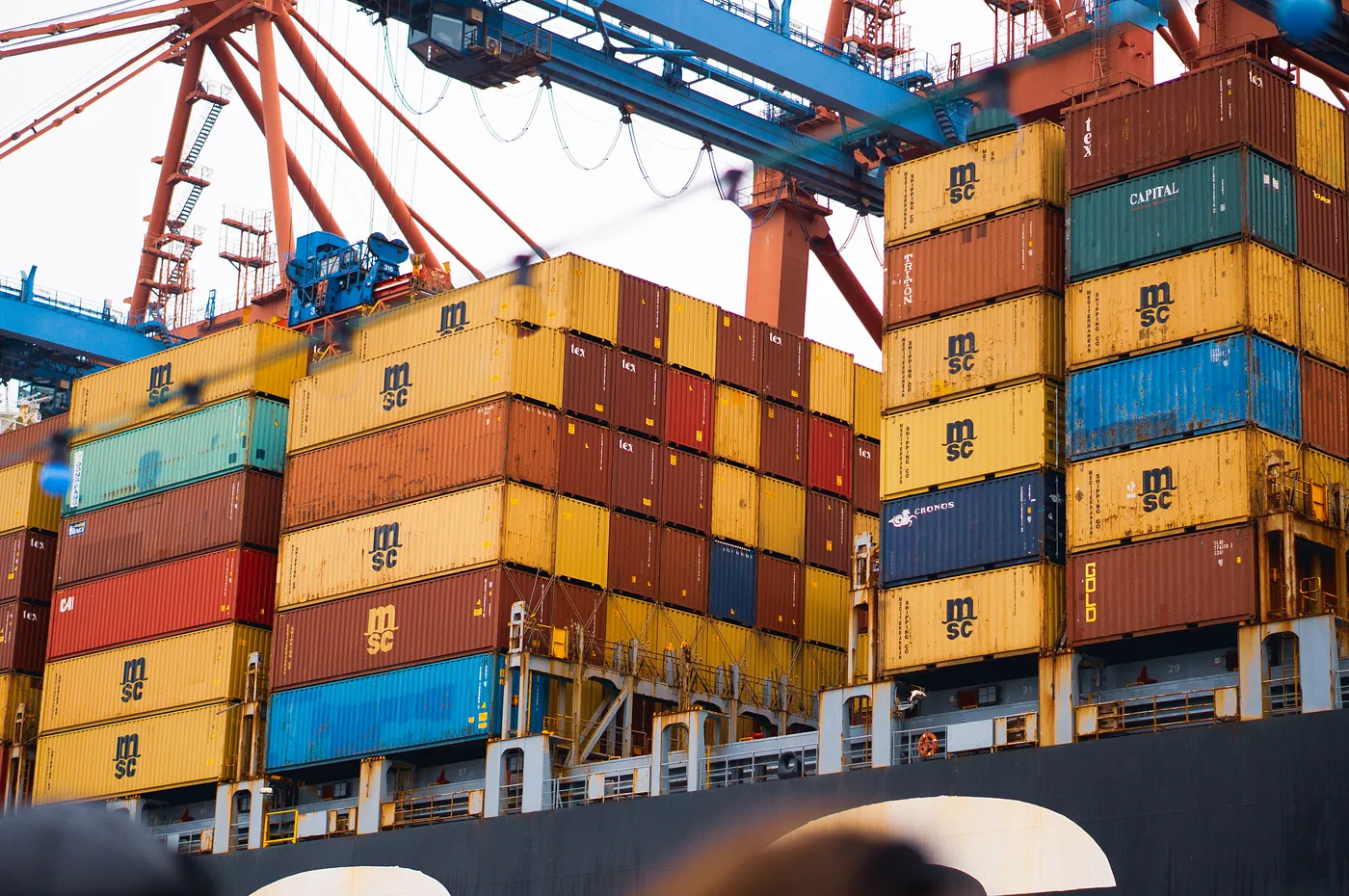A Brief History of the Construction Materials Procurement Process: From Bartering to Blockchain

Once Upon a Time
In the past, obtaining construction materials was labor-intensive and time-consuming. Builders and contractors relied heavily on local sources due to limited transportation options, making proximity a key factor in sourcing materials.
Materials were often acquired through trade or bartering between communities and civilizations. For example, ancient civilizations like the Egyptians and Sumerians traded goods and materials, giving them access to a broader range of resources for their construction projects.
Alternatively, builders relied on local sources such as forests and quarries for wood and stone. Clay, a commonly used building material, was obtained by digging pits and extracting it from the ground.
Acquiring construction materials in the past was neither quick nor easy. Builders frequently traveled long distances to obtain the necessary materials, which was both time-consuming and costly. Despite these challenges, they managed to create impressive structures using the resources available to them.
The Industrial Revolution's Impact
The Industrial Revolution of the 18th and 19th centuries brought significant changes to the construction materials procurement process. New manufacturing technologies and improved transportation methods allowed for the mass production and distribution of building materials at lower costs. This revolutionized construction projects worldwide, making materials more accessible and affordable.
One of the most notable outcomes was the mass production of bricks. Steam-powered brickmaking machines enabled the production of large quantities of bricks, leading to their widespread use in constructing iconic buildings of the era, such as factories and warehouses.
The use of iron and steel also became more prevalent, allowing for the construction of taller and more complex structures like bridges and skyscrapers. Advances in manufacturing technology made these materials more affordable and widely available, further transforming the construction landscape.
The 20th Century
The early 20th century saw continued evolution in the construction materials procurement process, driven by new materials and technologies. Concrete, used since ancient times, became more widely available and was instrumental in constructing skyscrapers and large buildings that define modern cities. The introduction of plastics and other synthetic materials provided builders with an expanded range of options.
After World War I, advances in manufacturing techniques made concrete more accessible and affordable, leading to its widespread use in post-war construction projects, including highways and bridges.
In the decades following World War II, the construction industry experienced a boom, with numerous new buildings and infrastructure projects springing up worldwide. This period saw the development of new materials and technologies, such as prefabricated building systems and advanced insulation. These innovations enabled faster and more efficient construction, contributing to the industry's rapid growth.
Despite these advancements, the procurement process itself remained largely unchanged. Builders and contractors still needed to identify required materials, create a list of specifications, research suppliers, compare prices, place orders, and ensure the materials met quality standards upon delivery.
The 1980s
In the 1980s, the construction materials procurement process remained similar to previous decades. Builders and contractors followed established practices of identifying materials, researching suppliers, and managing orders and deliveries.
However, technological advancements began to influence the process. The widespread use of computers and project management software in the construction industry made it easier to track orders, manage inventory, and communicate with suppliers and stakeholders. These tools began to streamline the procurement process, laying the groundwork for future advancements.
One World, One Standard
The late 1980s and early 1990s, marked by the collapse of the Soviet Union and the fall of the Berlin Wall, brought about a significant shift in the construction materials procurement process. These events ushered in an era of globalization, significantly increasing economic and cultural exchange between countries.
One impact of globalization was the availability of a broader range of construction materials from overseas. Architects and designers were no longer limited to locally available materials but could choose from a global market. While this increased the options available for construction projects, it also made the procurement process more complex and time-consuming.
The rise of fax and email communication further complicated the procurement process. Although these technologies made it easier to communicate and place orders, they added an extra layer of complexity. Builders and contractors had to coordinate with suppliers in different time zones and overcome language barriers, which could be time-consuming and frustrating.
Global supply chains and the use of materials from overseas also had environmental impacts. Transporting materials over long distances contributed to greenhouse gas emissions and other forms of pollution, while the demand for certain materials, such as timber, led to deforestation in some areas.
Construction Industry Resisting Technology
In recent decades, rapid advancements in the internet and technology have transformed many industries, making various aspects of our lives easier and more efficient. However, the construction materials procurement process has remained relatively unchanged, with many companies failing to fully utilize available technologies.
One reason for this is the construction industry's traditional reluctance to adopt new technologies. Many companies are hesitant to change established processes, even when newer technologies could offer significant benefits. Consequently, the construction materials procurement process lags behind other industries in terms of technological advancement.
Another factor is the highly regulated nature of the construction industry, with strict safety and quality standards. This makes it difficult for companies to adopt new technologies, as additional training and testing may be required to ensure compliance.
Despite these challenges, the rise of e-commerce in the mid-90s, led by companies like eBay and Amazon, has impacted the construction materials procurement process. Many online platforms now sell construction materials, and some companies have started using these platforms for procurement. However, many large companies still rely on outdated methods, hindering the full adoption of modern technologies.
A Path to Modernization
The construction materials procurement process has significant potential for improvement through the adoption of modern technologies. By increasing the use of online platforms and e-commerce, companies could access a broader range of suppliers, negotiate more competitive prices, and streamline the procurement process, making it more efficient and cost-effective.
Another way to modernize the procurement process is through the use of advanced analytics and artificial intelligence (AI) to predict demand and optimize supply chains. These technologies could help companies better forecast demand, reduce excess inventory, and improve supply chain efficiency.
Additionally, blockchain technology could increase transparency and reduce the risk of fraud in the supply chain. Blockchain, a decentralized and secure database, allows for the recording of transactions and tracking of assets. By using blockchain, companies could track the movement of materials from their point of origin to the construction site, enhancing transparency and reducing the risk of fraud.
 Building Materials
Building Materials
 Tools & Machinery
Tools & Machinery
 Plumbing
Plumbing
 Electrical Supplies
Electrical Supplies
 Air Conditioning
Air Conditioning
 Safety & Security
Safety & Security
 Finishing Materials
Finishing Materials
 Hardware & Fasteners
Hardware & Fasteners
 Lighting & Electrical Fixtures
Lighting & Electrical Fixtures
 Landscaping & Outdoor
Landscaping & Outdoor
 Construction Services
Construction Services
 Construction Technology & Software
Construction Technology & Software









